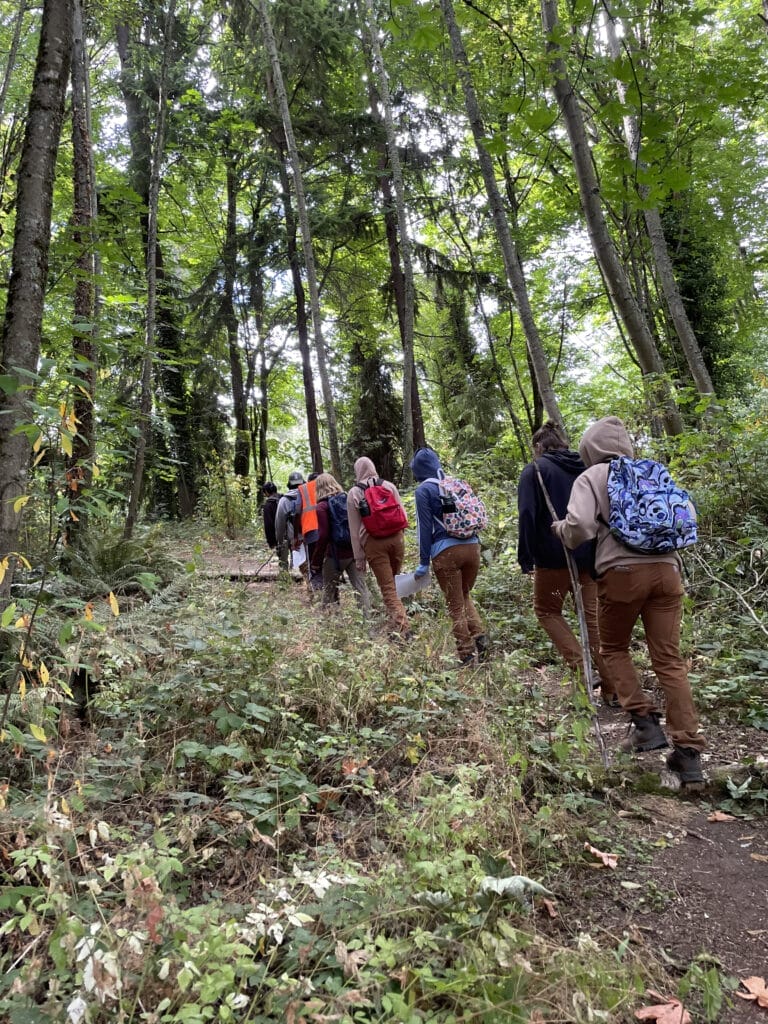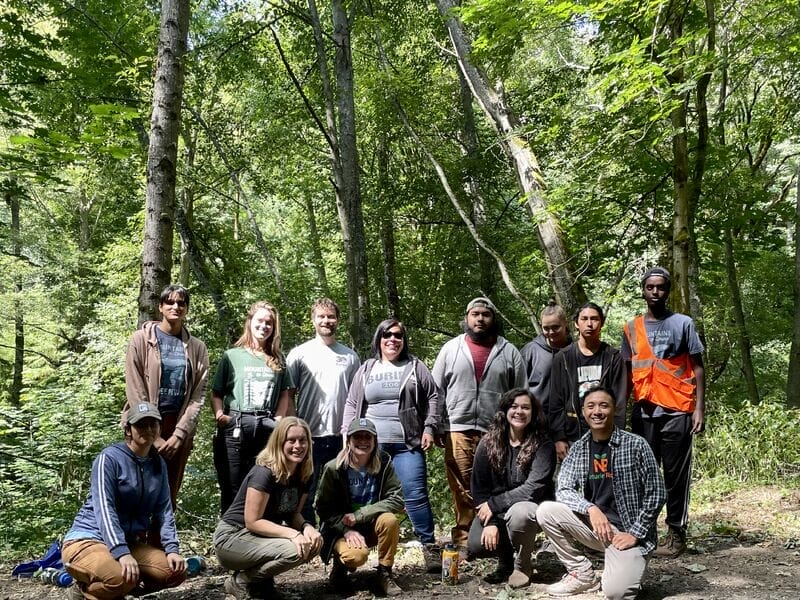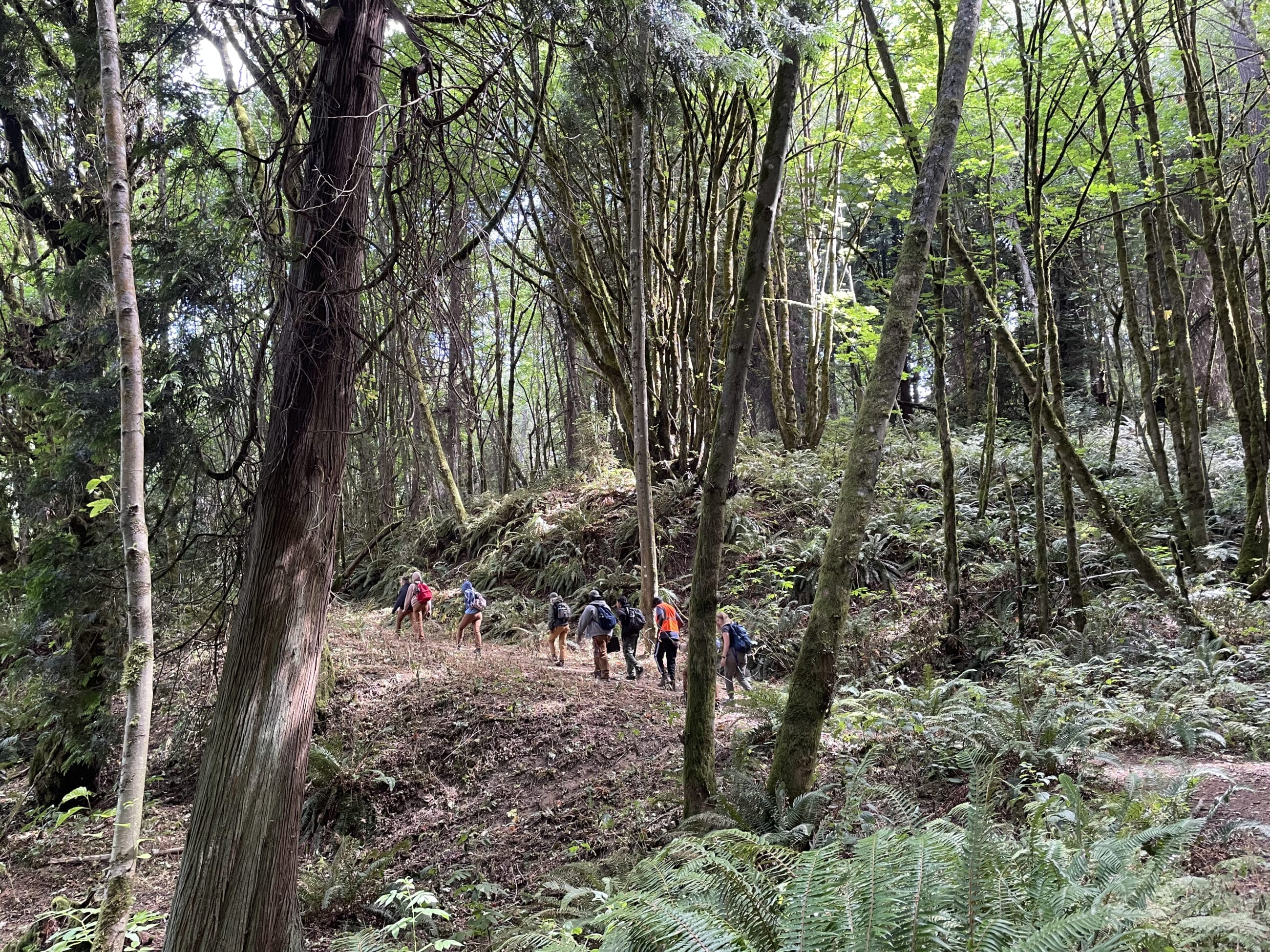Burien Green Teens: Award-Winning Curriculum Transforms Lives with Environmental Solutions
Located just beyond a bustling road in Burien is Salmon Creek Ravine, a little-known green space that functions as a microcosm of Washington’s biggest environmental challenges, and an outdoor classroom that teaches youth how to meet them with conservation science.
Within the fold of this urban oasis, the hum of cars and buses is dulled by slopes of rushing water and swishing ferns—the sounds of 88 acres of riverbank habitat that used to play host to salmon. As the name suggests, generations of salmon used to migrate to and from the Puget Sound to this ravine. This was the case for hundreds, if not thousands of years before Joe Burke, a logger who operated a small sawmill in Salmon Creek Ravine, acquired the land in the 1940s and decided he didn’t like the smell of dead fish. Burke stopped the steady flow of coho, chum, Chinook Salmon, and steelhead by blocking their path with rocks. This history is a facet of the many discussions that Highline School District students have with educators during Burien Green Teens, a program that invites youths to learn about conservation careers while earning a stipend. During the two weeks they spend pulling ivy and blackberry and testing water quality, they get a peek at how the past has shaped the area they stand on and are empowered with the tools to reshape the stream for a more biodiverse future.

“They have really deep conversations whenever we’ve discussed social justice or environmental justice, climate change, and their impact on the world and in this area,” said Mountains to Sound Greenway Trust Education Coordinator Lindsay Spangler.
In the summer of 2022, Lindsay spent time with the first cohort of Burien Green Teens. She says the students dug into vulnerable topics about the very things that have impacted their communities, such as environmental racism or colonization’s impact on the places they live. Giving students the opportunity to unpack environmental racism is important, especially as people of color continue to face unequal access to conservation roles and outdoor recreation. A report from the National Health Foundation (NHF) found that “close to 70 percent of people who visit national forests, national wildlife refuges, and national parks are white.” The National Recreation and Parks Association (NRPA) cites proximity to parks as well as racialized economic policies that keep Black, Indigenous, and People of Color (BIPOC) from empowering roles as major contributing factors.
“When you have historically not been invited into green spaces at all, what does it mean to go from your apartment, where you don’t even have a yard, to the east side of the mountains and actually go hiking?” says City of Burien Recreation Coordinator Gabbi Gonzales.

In a place like King County where underrepresented groups have been historically shunted out of green spaces, programs like Burien Green Teens, Gabbi says, take a step towards “building and repairing relationships with community”—and the land.
Before Burien Green Teens began, the sprawl of blackberry and ivy was prominent in Salmon Creek Ravine, making it harder for native trees to take root and thrive. Today, new ground space, created by the determined efforts of Burien Green Teens and volunteers, has made way for hundreds of tree saplings to take root. In 2023, hundreds of native trees that consist of grand fir, Douglas-fir, Western hemlock, cottonwood, and Pacific willow have been planted along the stream to create a more biodiverse tree canopy.

This dynamic program was made possible by a collective effort to draft a grant application and curriculum with a very short turnaround. In 2021, City of Burien Recreation Coordinator Gabbi Gonzales wanted to take advantage of funding for youth education to boost the skills of students, so she acted fast to get the Greenway Trust and Dirt Corps on board. “This cool partnership came up at the last minute, and we all just wrote the grant application and dreamed of this amazing two-week-long summer program,” Gabbi recalls.
With grant support from the Washington Recreation and Parks Association SEEK Fund and the shared passion of the partnering organizations, the Burien Green Teens program came to life. The curriculum, designed by educators from the Greenway Trust, the City of Burien, and Dirt Corps, focused on topics ranging from climate justice and career exploration to ecological restoration and the significance of indigenous land stewardship. They wanted students to not only learn about the environment but also develop a personal connection to restoration and ecology. They aimed to ignite a ripple effect of awareness and care within the students and the wider community.
The educators contributed their expertise in site support, logistics, and curriculum building, working collaboratively to develop a dynamic program within a tight timeframe. The focus was on creating a curriculum based on the remediation of the greenspace, considering the site’s sloped ecosystem that led to the fern-flanked ravine. Students learned about the consequences of human intervention, blocking salmon from their life cycle, and how restoration could help reintroduce these iconic fish.

“Our training programs emphasize people’s connection to restoration and ecology and the world around them,” says Dirt Corps Co-founder Andrew Schiffer, highlighting the program’s emphasis on fostering a deep connection with nature.
Despite how new the program is, it has already made a lasting impact on students who participated in the first year. Gabbi says former interns have expressed a newfound appreciation for the outdoors and interest in returning to the program. In 2023, Burien Green Teens program leaders added a mentorship component, allowing former participants to return as assistant leaders for the new students, allowing them to deepen their understanding of restoration and gain a behind-the-scenes perspective on community-based environmental programming.
“One of the participants wanted to be a mentor because, before they did the program, if they had free time, they would just go home… this program has shown them how comfortable they can be outside. Now, they go for hikes, or they go hang out in the forest,” said Gabbi.
In March 2023, Burien Green Teens received the Champions of Change Award from the Washington Recreation and Parks Association for enhancing social equity and addressing environmental impacts while providing experience in green careers within underrepresented communities “farthest from justice.” In Burien, many Highline School District students live under circumstances shaped by a lack of access, many are the children of immigrants, are living in apartments, or even on their own. For these teens, getting paid to pull weeds and learn about salmon life cycles is life-changing.

Burien Green Teens not only teaches students about the environment but also fosters a personal connection to restoration and ecology. As the teens take up the mantle of caretakers for their environment, they become role models for the wider community.
Gabbi believes Burien Green Teens is more than just an award-winning curriculum; it is a space to breathe in the forest air, listen to the ecosystem, and tune into a way of being that is harder to access in urban spaces. “The youth were already special; we just gave them a place to thrive.”
Want to help support the future of the Greenway Trust’s Environmental Education Program? Every donation makes a big difference!
Support the education program
Help spread the word





